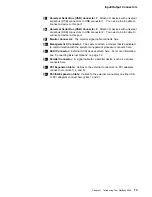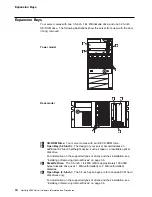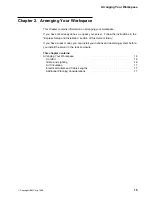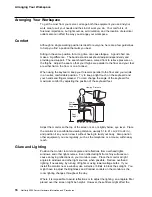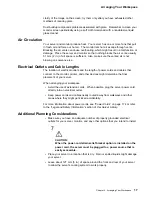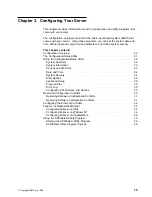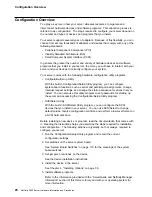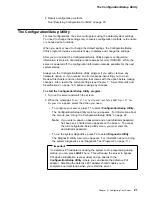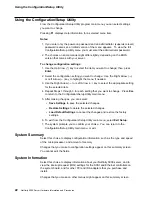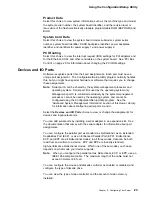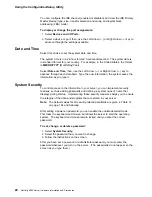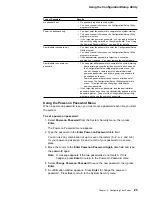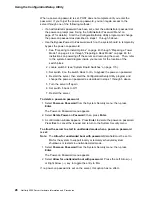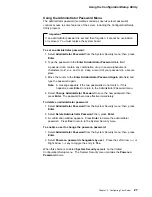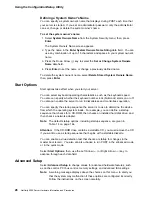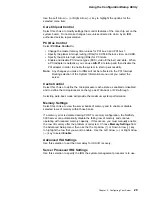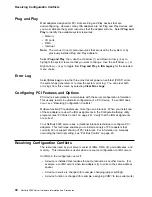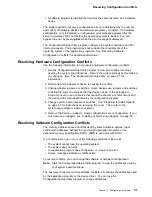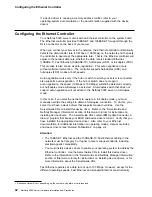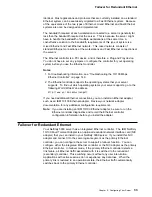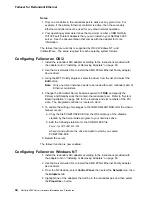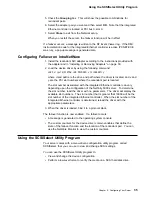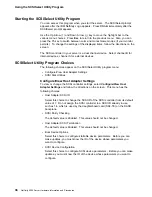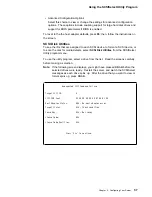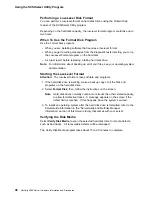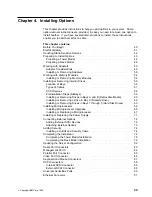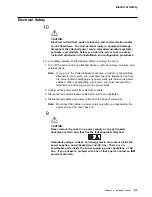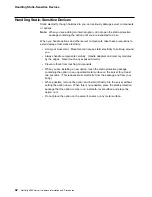
Using the Configuration/Setup Utility
Defining a System Owner's Name
You can specify a system owner's name that displays during POST each time that
your server is started. If you set an administrator password, only the administrator
can set, change, or delete the system owner's name.
To set the system owner's name:
1. Select System Owners Name from the System Security menu; then, press
Enter.
The System Owners Name screen appears.
2. Type the name in the Enter System Owners Name String data field. You can
use any combination of up to 15 characters and spaces in your system owner's
name.
3. Press the Down Arrow (
↓
) key to select the Set or Change System Owners
Name data field.
4. Press Enter to set the name or change a previously defined name.
To delete the system owner's name, select Delete Stored System Owners Name;
then, press Enter.
Start Options
Start options take effect when you start your server.
You can select keyboard operating characteristics, such as the keyboard speed.
You also can specify whether the keyboard number lock (NumLock) starts on or off.
You also can enable the server to run in disketteless and monitorless operation.
You can specify the startup sequence the server is to use to determine the device
from which the operating system loads. For example, you can define a startup
sequence that checks for a CD-ROM, then checks an installed hard disk drive, and
then checks a network adapter.
Note: The default startup options, including startup sequence, are given in
Table 14 on page 164.
Attention: If the CD-ROM drive contains a startable CD, you must remove the CD
if you want to use a startup sequence that begins with a startable diskette.
You can enable a virus-detection test that checks at startup for changes in the
master boot record. You also can also choose to run POST in the enhanced mode
or in the quick mode.
Select Start Options; then, use the Left Arrow (
←
) or Right Arrow (
→
) key to
advance through each data field.
Advanced Setup
Select Advanced Setup to change values for advanced hardware features, such
as cache control, PCI bus control, memory settings, and advanced ISA settings.
Note: A warning message displays above the choices on this menu, to alert you
that the system may malfunction if these options are configured incorrectly.
Follow the instructions on the screen carefully.
28
Netfinity 5000 Server Hardware Information and Procedures

